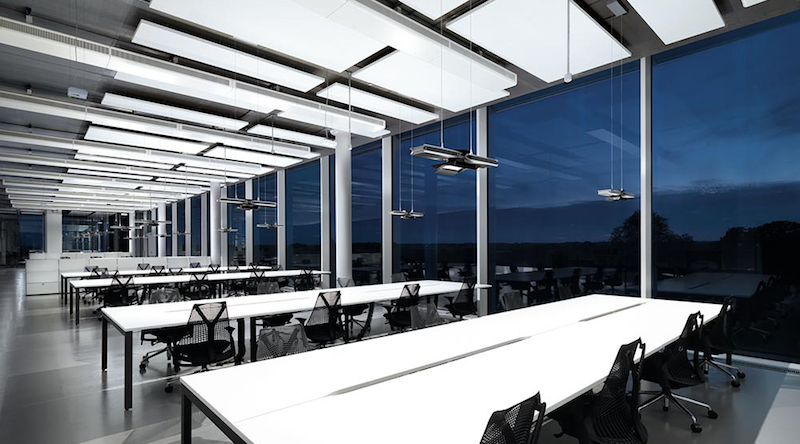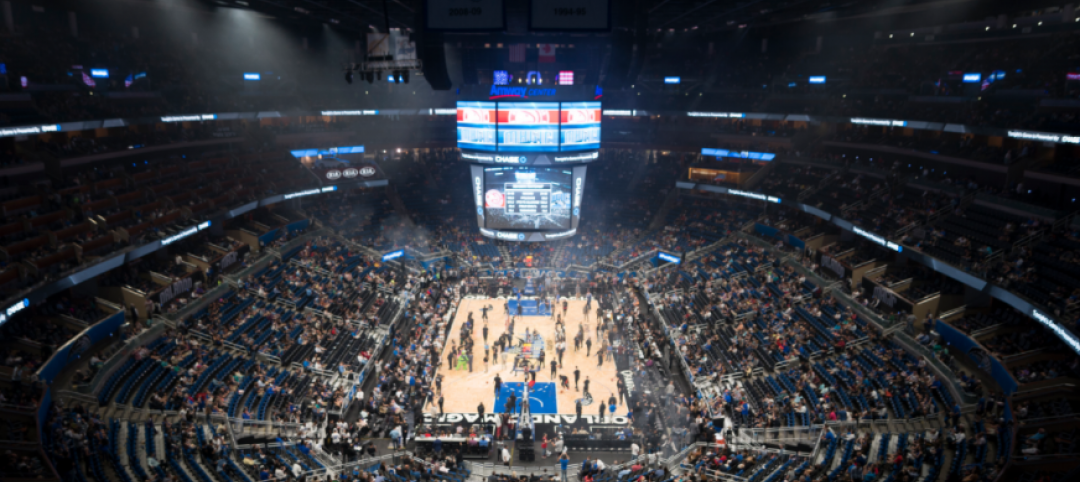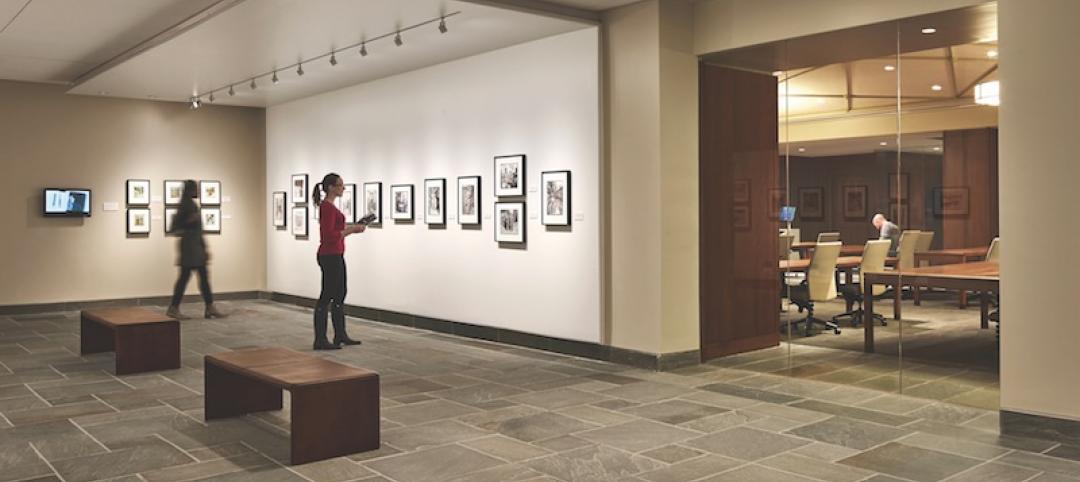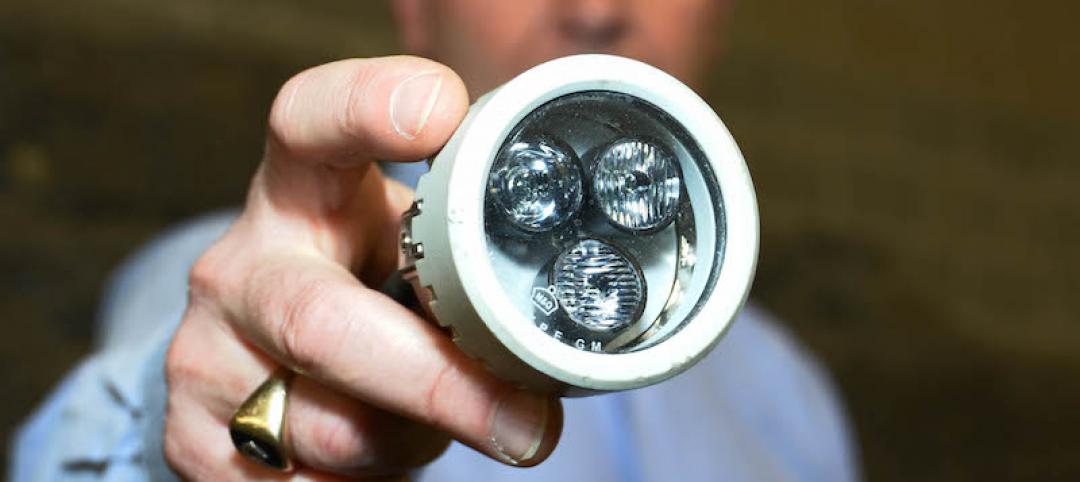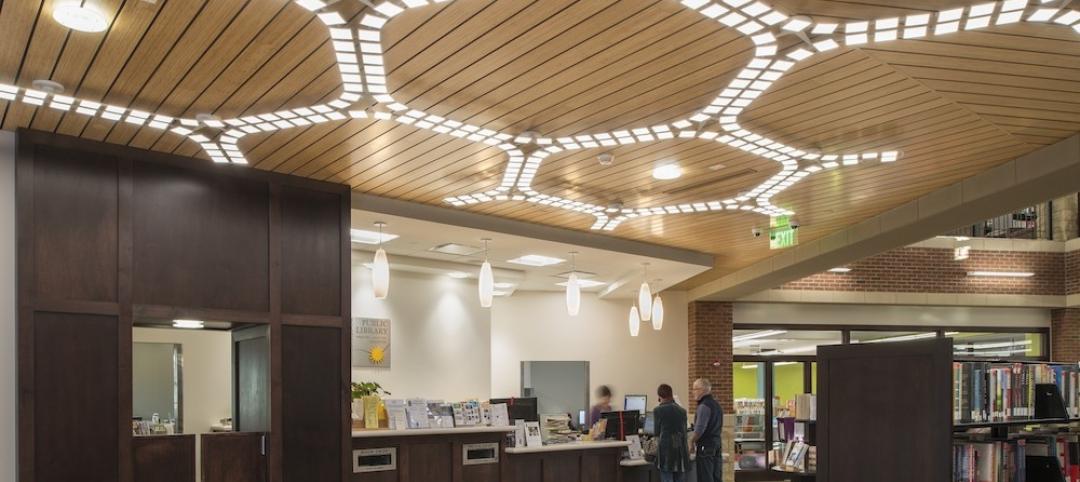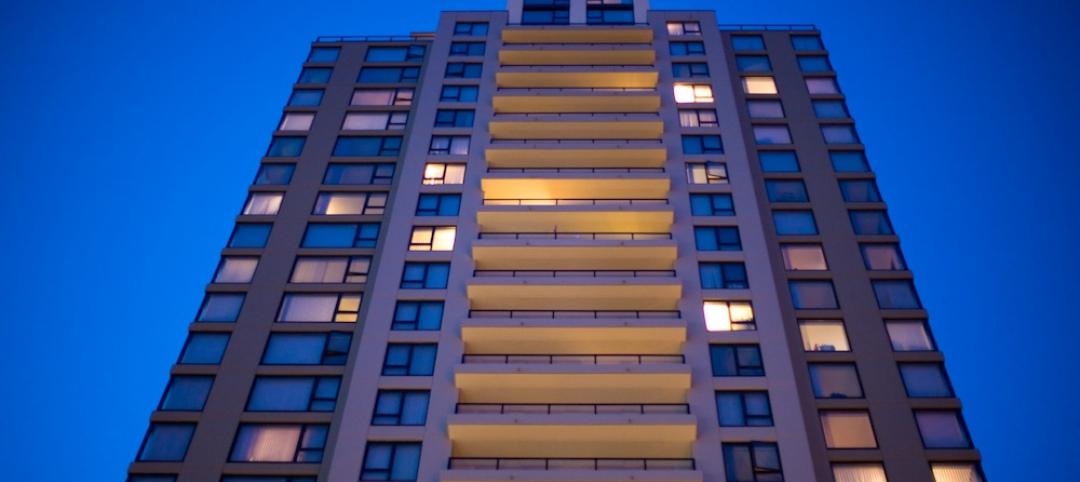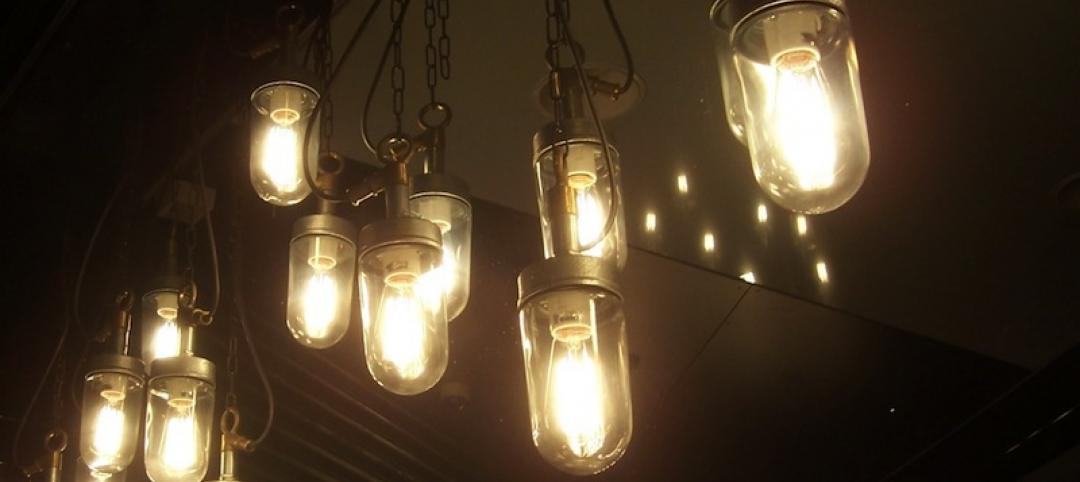Dyson is mostly known for its (expensive) vacuum cleaners that claim to never lose suction and have the ability to get every inch of your carpet clean, but Dyson’s newest invention isn’t a new super powerful or ultra quiet vacuum cleaner, in fact, it isn’t a vacuum cleaner at all; it’s the Cu-Beam Duo, a light that is rated to operate for 22 years without a bulb change.
As Fastcodesign.com reports, the Cu-Beam Duo is a new lighting system that uses just two LEDs, not the hundreds that most commercial lighting fixtures use, to light the space below the fixture, above the fixture, or a combination of the two. Each LED is about the size of a quarter, massive for LED standards, and is fitted with custom-engineered lenses to spread the glow over a larger area. One LED provides the light for task surfaces below while the other provides the ceiling light, which is optimal for illuminating open spaces like atriums, or offices.
The actual lights make up just a small portion of the 28-inch fixture, however. The rest is a large heat sink with the sole purpose of keeping the LEDs cool because a cool LED can run for a very long time without fading or discoloring. The Cu-Beam Duo uses heat pipe technology to cool the two LEDs.
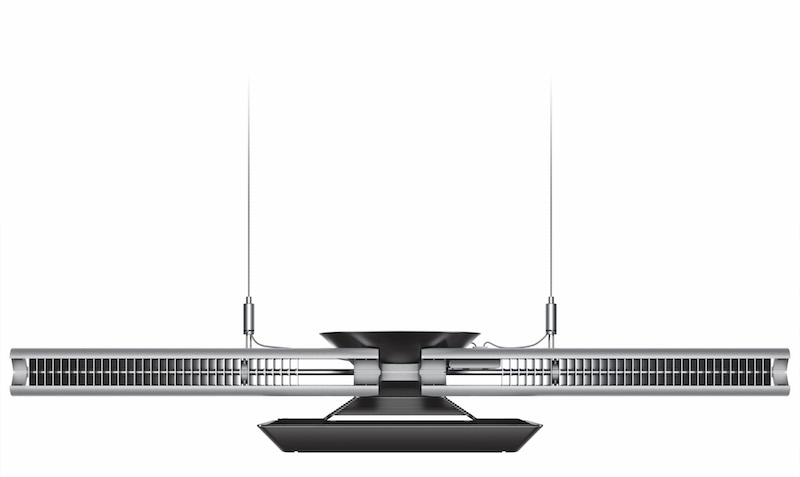
The Cu-Beam Duo uses six vacuum-sealed heat pipes to transfer heat away from the light source to be dissipated along the wings. Each tube contains a drop of water. When the light is turned on, the heat turns the water into vapor. The vapor then disperses throughout the pipe and, when it reaches a cool area of the tube, condenses back into water. A copper wick then draws the water back toward the heat source and the process starts again.
The idea to cool LEDs with a heat pipe was first used in the CSYS desk lamp, a lamp that came with the promise of running for 40 or 50 years without needing to change the bulb. The Cu-Beam Duo takes this initial technology and improves and expands upon it.
The stock light puts out 8,500 lumens but it can be changed and fitted with a 20,000 lumen LED. Additionally, there are sensors that can detect when no one is at the table or workspace below and shut off the down light, leaving just the up beam on to keep the room illuminated. Additionally, the each lamp has internal shutters that can crop the down beam to the width of the table below with no spill. The crop light is not wasted, though. The Cu-Beam Duo uses "Ricochet" technology to convert any unwanted down light into up light.
The Cu-Beam Duo has not been priced yet, but the company says it was designed with the intention of being used for large-scale, commercial products. The lights will be available in silver, black, and white with Dyson offering a range of custom colors, as well.
Related Stories
| Jun 13, 2017
Accelerate Live! talk: Next-gen materials for the built environment, Blaine Brownell, Transmaterial
Architect and materials guru Blaine Brownell reveals emerging trends and applications that are transforming the technological capacity, environmental performance, and design potential of architecture.
Lighting | Jun 7, 2017
5 steps to significant annual savings: LED lighting of Amway Center’s Arena Bowl & Practice Court
Lighting retrofit of Orlando’s Amway Center slashes energy costs
Lighting | Apr 10, 2017
Lighting consultants and samples are necessary in the wild west LED landscape
As LED lighting sources proliferate, AEC firms are more diligent about validating performance before diving into new products.
Lighting | Oct 6, 2016
Healthcare systems lighting their way to savings
There has been a rapid improvement and availability of LED products as primary light sources in most healthcare facility applications.
Building Tech | Aug 26, 2016
NBBJ’s Goldilocks sensor technology can help employees find a workspace that is just right
The technology measures light levels, humidity and temperature, motion, and sound.
Lighting | Apr 11, 2016
Lighting experts explore applications for OLED, LiFi, and laser diodes
LEDs still have room for improvement. That may explain why this technology has yet to be challenged competitively by other solid-state products that are either pricier, less efficient, or unavailable commercially.
Lighting | Apr 5, 2016
Lighting requirements for high-rise dwellings proposed for energy standard
The requirements would effectively eliminate incandescent and halogen bulbs.
Lighting | Feb 29, 2016
DOE unveils proposal for new light bulb efficiency standards
Only LEDs meet this efficiency level today.


